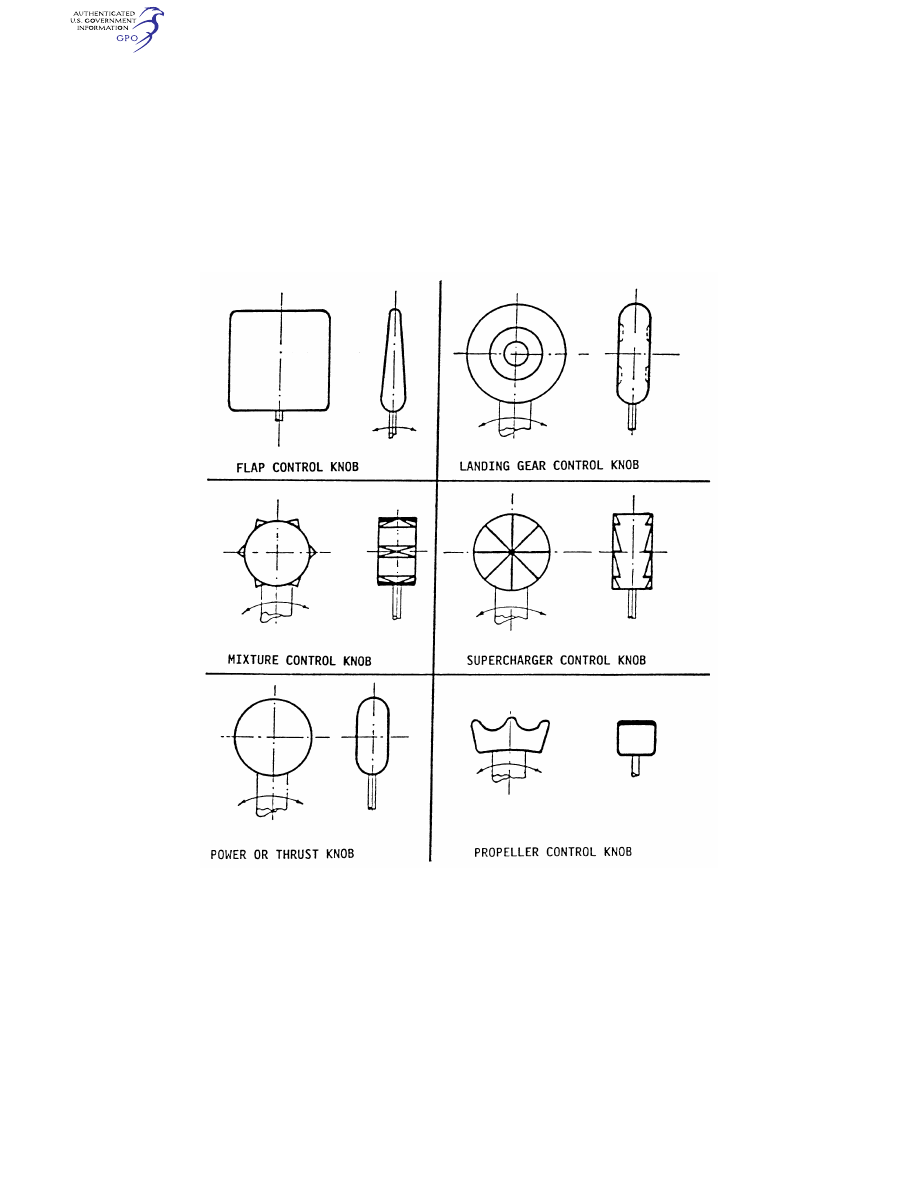
281
Federal Aviation Administration, DOT
§ 25.783
[Doc. No. 5066, 29 FR 18291, Dec. 24, 1964, as amended by Amdt. 25–72, 55 FR 29779, July 20, 1990]
§ 25.783
Fuselage doors.
(a)
General. This section applies to fu-
selage doors, which includes all doors,
hatches, openable windows, access pan-
els, covers, etc., on the exterior of the
fuselage that do not require the use of
tools to open or close. This also applies
to each door or hatch through a pres-
sure bulkhead, including any bulkhead
that is specifically designed to func-
tion as a secondary bulkhead under the
prescribed failure conditions of part 25.
These doors must meet the require-
ments of this section, taking into ac-
count both pressurized and unpres-
surized flight, and must be designed as
follows:
(1) Each door must have means to
safeguard against opening in flight as a
result of mechanical failure, or failure
of any single structural element.
VerDate Sep<11>2014
09:06 Jun 28, 2024
Jkt 262046
PO 00000
Frm 00291
Fmt 8010
Sfmt 8010
Y:\SGML\262046.XXX
262046
EC28SE91.048</GPH>
jspears on DSK121TN23PROD with CFR

282
14 CFR Ch. I (1–1–24 Edition)
§ 25.783
(2) Each door that could be a hazard
if it unlatches must be designed so that
unlatching during pressurized and un-
pressurized flight from the fully closed,
latched, and locked condition is ex-
tremely improbable. This must be
shown by safety analysis.
(3) Each element of each door oper-
ating system must be designed or,
where impracticable, distinctively and
permanently marked, to minimize the
probability of incorrect assembly and
adjustment that could result in a mal-
function.
(4) All sources of power that could
initiate unlocking or unlatching of any
door must be automatically isolated
from the latching and locking systems
prior to flight and it must not be pos-
sible to restore power to the door dur-
ing flight.
(5) Each removable bolt, screw, nut,
pin, or other removable fastener must
meet the locking requirements of
§ 25.607.
(6) Certain doors, as specified by
§ 25.807(h), must also meet the applica-
ble requirements of §§ 25.809 through
25.812 for emergency exits.
(b)
Opening by persons. There must be
a means to safeguard each door against
opening during flight due to inad-
vertent action by persons. In addition,
design precautions must be taken to
minimize the possibility for a person to
open a door intentionally during flight.
If these precautions include the use of
auxiliary devices, those devices and
their controlling systems must be de-
signed so that—
(1) No single failure will prevent
more than one exit from being opened;
and
(2) Failures that would prevent open-
ing of the exit after landing are im-
probable.
(c)
Pressurization prevention means.
There must be a provision to prevent
pressurization of the airplane to an un-
safe level if any door subject to pres-
surization is not fully closed, latched,
and locked.
(1) The provision must be designed to
function after any single failure, or
after any combination of failures not
shown to be extremely improbable.
(2) Doors that meet the conditions
described in paragraph (h) of this sec-
tion are not required to have a dedi-
cated pressurization prevention means
if, from every possible position of the
door, it will remain open to the extent
that it prevents pressurization or safe-
ly close and latch as pressurization
takes place. This must also be shown
with any single failure and malfunc-
tion, except that—
(i) With failures or malfunctions in
the latching mechanism, it need not
latch after closing; and
(ii) With jamming as a result of me-
chanical failure or blocking debris, the
door need not close and latch if it can
be shown that the pressurization loads
on the jammed door or mechanism
would not result in an unsafe condi-
tion.
(d)
Latching and locking. The latching
and locking mechanisms must be de-
signed as follows:
(1) There must be a provision to latch
each door.
(2) The latches and their operating
mechanism must be designed so that,
under all airplane flight and ground
loading conditions, with the door
latched, there is no force or torque
tending to unlatch the latches. In addi-
tion, the latching system must include
a means to secure the latches in the
latched position. This means must be
independent of the locking system.
(3) Each door subject to pressuriza-
tion, and for which the initial opening
movement is not inward, must—
(i) Have an individual lock for each
latch;
(ii) Have the lock located as close as
practicable to the latch; and
(iii) Be designed so that, during pres-
surized flight, no single failure in the
locking system would prevent the
locks from restraining the latches nec-
essary to secure the door.
(4) Each door for which the initial
opening movement is inward, and
unlatching of the door could result in a
hazard, must have a locking means to
prevent the latches from becoming dis-
engaged. The locking means must en-
sure sufficient latching to prevent
opening of the door even with a single
failure of the latching mechanism.
(5) It must not be possible to position
the lock in the locked position if the
latch and the latching mechanism are
not in the latched position.
VerDate Sep<11>2014
09:06 Jun 28, 2024
Jkt 262046
PO 00000
Frm 00292
Fmt 8010
Sfmt 8010
Y:\SGML\262046.XXX
262046
jspears on DSK121TN23PROD with CFR

283
Federal Aviation Administration, DOT
§ 25.783
(6) It must not be possible to unlatch
the latches with the locks in the
locked position. Locks must be de-
signed to withstand the limit loads re-
sulting from—
(i) The maximum operator effort
when the latches are operated manu-
ally;
(ii) The powered latch actuators, if
installed; and
(iii) The relative motion between the
latch and the structural counterpart.
(7) Each door for which unlatching
would not result in a hazard is not re-
quired to have a locking mechanism
meeting the requirements of para-
graphs (d)(3) through (d)(6) of this sec-
tion.
(e)
Warning, caution, and advisory in-
dications. Doors must be provided with
the following indications:
(1) There must be a positive means to
indicate at each door operator’s station
that all required operations to close,
latch, and lock the door(s) have been
completed.
(2) There must be a positive means
clearly visible from each operator sta-
tion for any door that could be a haz-
ard if unlatched to indicate if the door
is not fully closed, latched, and locked.
(3) There must be a visual means on
the flight deck to signal the pilots if
any door is not fully closed, latched,
and locked. The means must be de-
signed such that any failure or com-
bination of failures that would result
in an erroneous closed, latched, and
locked indication is improbable for—
(i) Each door that is subject to pres-
surization and for which the initial
opening movement is not inward; or
(ii) Each door that could be a hazard
if unlatched.
(4) There must be an aural warning
to the pilots prior to or during the ini-
tial portion of takeoff roll if any door
is not fully closed, latched, and locked,
and its opening would prevent a safe
takeoff and return to landing.
(f)
Visual inspection provision. Each
door for which unlatching of the door
could be a hazard must have a provi-
sion for direct visual inspection to de-
termine, without ambiguity, if the
door is fully closed, latched, and
locked. The provision must be perma-
nent and discernible under operational
lighting conditions, or by means of a
flashlight or equivalent light source.
(g)
Certain maintenance doors, remov-
able emergency exits, and access panels.
Some doors not normally opened ex-
cept for maintenance purposes or emer-
gency evacuation and some access pan-
els need not comply with certain para-
graphs of this section as follows:
(1) Access panels that are not subject
to cabin pressurization and would not
be a hazard if open during flight need
not comply with paragraphs (a)
through (f) of this section, but must
have a means to prevent inadvertent
opening during flight.
(2) Inward-opening removable emer-
gency exits that are not normally re-
moved, except for maintenance pur-
poses or emergency evacuation, and
flight deck-openable windows need not
comply with paragraphs (c) and (f) of
this section.
(3) Maintenance doors that meet the
conditions of paragraph (h) of this sec-
tion, and for which a placard is pro-
vided limiting use to maintenance ac-
cess, need not comply with paragraphs
(c) and (f) of this section.
(h)
Doors that are not a hazard. For
the purposes of this section, a door is
considered not to be a hazard in the un-
latched condition during flight, pro-
vided it can be shown to meet all of the
following conditions:
(1) Doors in pressurized compart-
ments would remain in the fully closed
position if not restrained by the
latches when subject to a pressure
greater than
1
⁄
2
psi. Opening by persons,
either inadvertently or intentionally,
need not be considered in making this
determination.
(2) The door would remain inside the
airplane or remain attached to the air-
plane if it opens either in pressurized
or unpressurized portions of the flight.
This determination must include the
consideration of inadvertent and inten-
tional opening by persons during either
pressurized or unpressurized portions
of the flight.
(3) The disengagement of the latches
during flight would not allow depres-
surization of the cabin to an unsafe
level. This safety assessment must in-
clude the physiological effects on the
occupants.
VerDate Sep<11>2014
09:06 Jun 28, 2024
Jkt 262046
PO 00000
Frm 00293
Fmt 8010
Sfmt 8010
Y:\SGML\262046.XXX
262046
jspears on DSK121TN23PROD with CFR

284
14 CFR Ch. I (1–1–24 Edition)
§ 25.785
(4) The open door during flight would
not create aerodynamic interference
that could preclude safe flight and
landing.
(5) The airplane would meet the
structural design requirements with
the door open. This assessment must
include the aeroelastic stability re-
quirements of § 25.629, as well as the
strength requirements of subpart C of
this part.
(6) The unlatching or opening of the
door must not preclude safe flight and
landing as a result of interaction with
other systems or structures.
[Doc. No. 2003–14193, 69 FR 24501, May 3, 2004]
§ 25.785
Seats, berths, safety belts, and
harnesses.
(a) A seat (or berth for a nonambu-
lant person) must be provided for each
occupant who has reached his or her
second birthday.
(b) Each seat, berth, safety belt, har-
ness, and adjacent part of the airplane
at each station designated as occupi-
able during takeoff and landing must
be designed so that a person making
proper use of these facilities will not
suffer serious injury in an emergency
landing as a result of the inertia forces
specified in §§ 25.561 and 25.562.
(c) Each seat or berth must be ap-
proved.
(d) Each occupant of a seat that
makes more than an 18-degree angle
with the vertical plane containing the
airplane centerline must be protected
from head injury by a safety belt and
an energy absorbing rest that will sup-
port the arms, shoulders, head, and
spine, or by a safety belt and shoulder
harness that will prevent the head
from contacting any injurious object.
Each occupant of any other seat must
be protected from head injury by a
safety belt and, as appropriate to the
type, location, and angle of facing of
each seat, by one or more of the fol-
lowing:
(1) A shoulder harness that will pre-
vent the head from contacting any in-
jurious object.
(2) The elimination of any injurious
object within striking radius of the
head.
(3) An energy absorbing rest that will
support the arms, shoulders, head, and
spine.
(e) Each berth must be designed so
that the forward part has a padded end
board, canvas diaphragm, or equivalent
means, that can withstand the static
load reaction of the occupant when
subjected to the forward inertia force
specified in § 25.561. Berths must be free
from corners and protuberances likely
to cause injury to a person occupying
the berth during emergency conditions.
(f) Each seat or berth, and its sup-
porting structure, and each safety belt
or harness and its anchorage must be
designed for an occupant weight of 170
pounds, considering the maximum load
factors, inertia forces, and reactions
among the occupant, seat, safety belt,
and harness for each relevant flight
and ground load condition (including
the emergency landing conditions pre-
scribed in § 25.561). In addition—
(1) The structural analysis and test-
ing of the seats, berths, and their sup-
porting structures may be determined
by assuming that the critical load in
the forward, sideward, downward, up-
ward, and rearward directions (as de-
termined from the prescribed flight,
ground, and emergency landing condi-
tions) acts separately or using selected
combinations of loads if the required
strength in each specified direction is
substantiated. The forward load factor
need not be applied to safety belts for
berths.
(2) Each pilot seat must be designed
for the reactions resulting from the ap-
plication of the pilot forces prescribed
in § 25.395.
(3) The inertia forces specified in
§ 25.561 must be multiplied by a factor
of 1.33 (instead of the fitting factor pre-
scribed in § 25.625) in determining the
strength of the attachment of each
seat to the structure and each belt or
harness to the seat or structure.
(g) Each seat at a flight deck station
must have a restraint system con-
sisting of a combined safety belt and
shoulder harness with a single-point re-
lease that permits the flight deck occu-
pant, when seated with the restraint
system fastened, to perform all of the
occupant’s necessary flight deck func-
tions. There must be a means to secure
each combined restraint system when
not in use to prevent interference with
the operation of the airplane and with
rapid egress in an emergency.
VerDate Sep<11>2014
09:06 Jun 28, 2024
Jkt 262046
PO 00000
Frm 00294
Fmt 8010
Sfmt 8010
Y:\SGML\262046.XXX
262046
jspears on DSK121TN23PROD with CFR



